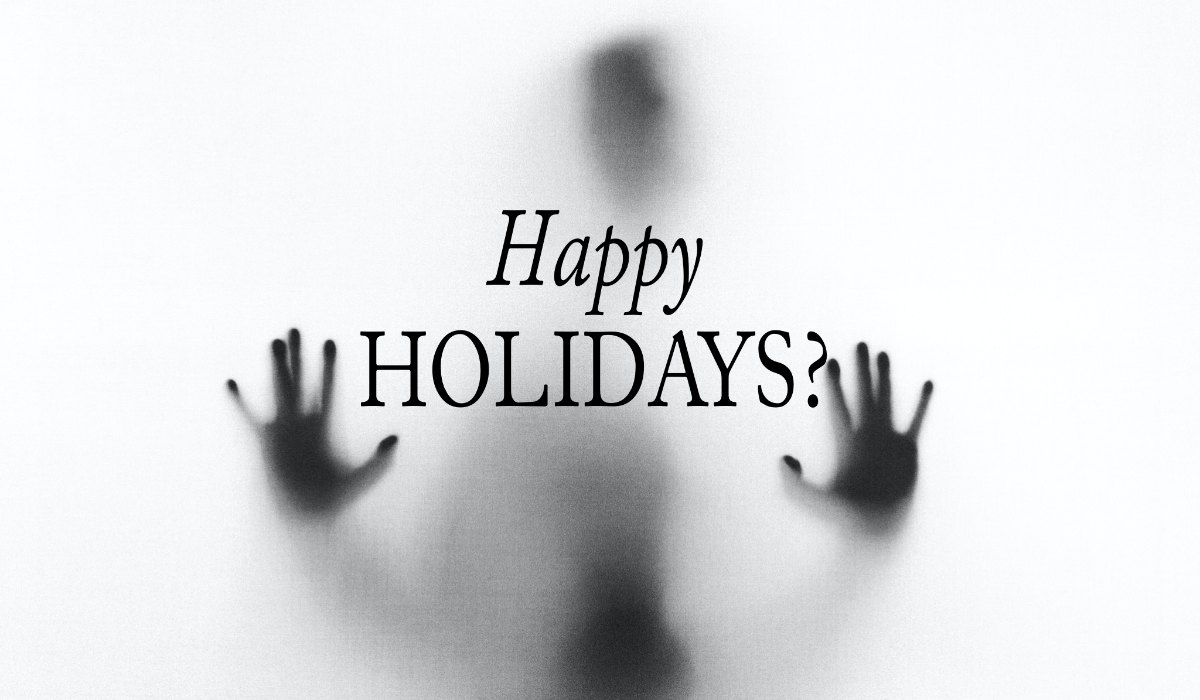The Never-ending Blahs
Major Depressive Disorder (MDD) isn’t just feeling sad. It’s gripping, immobilizing, and a challenge that leaves a lasting mark on a person’s quality...
6 min read
KD HOLMES, LPC, EMDR CERTIFIED, BTTI TRAINED
:
Nov 21, 2019 2:48:54 PM

What is Depression Treatment? The word “treatment” can feel so clinical, can't it? Yet, depression, in all its shades and complexities, truly is a medical condition-a struggle embedded not just in the mind but in the soul and body. We often misuse the term casually with comments like, "I’m depressed because my favorite Netflix series ended." But that isn’t the deep, aching sadness this refers to.No, the depression I’m talking about is the persistent “blah.” The heavy, suffocating sadness that doesn’t loosen its grip. It’s there when you wake up, it lingers throughout the day, and when it does fade, it often returns-sometimes more aggressively than before.
To truly understand the depths of depression, we must first look at its many faces.
Depression doesn’t have one universal look. It lives in shadowy corners, disguising itself in ways that can make it hard even for us to name it. Let's explore its three primary faces: mild, moderate, and severe.
Mild depression might feel like living life on autopilot. You manage to get things done-go to work, handle chores, even attend social gatherings-but everything feels muted. There’s this constant undercurrent of fatigue and detachment. You smile at your co-workers but feel no joy behind it. You clean your house, not out of pride or satisfaction, but because it needs to be done. It's a slow grind-like trudging uphill through molasses. And even though this level of depression seems “mild,” it still weighs heavy, requiring effort to push through each day.
Moderate depression's grip is tighter. It begins to interfere with routine aspects of your life-things you once managed despite difficulty now seem nearly impossible. Concentrating at work feels like solving puzzles in the dark. Social interactions, even with loved ones, feel draining. This emotional heaviness, as if you’re carrying an invisible wound, casts shadows on every part of your life. At this stage, ignoring these feelings begins to feel dangerous. Seeking professional help isn’t just an option; it’s often a lifeline.
Severe depression is all-consuming like a heavy fog blanketing your every move. Getting out of bed can feel insurmountable. Everyday tasks, like eating or brushing your teeth, might seem pointless or even impossible. Despair and hopelessness take up residence in your mind, making joy and recovery seem unattainable. At this point, therapy alone may not be enough-severe depression often calls for intensive support through specialized treatment programs. But it’s important to know this isn’t the end of the road. Seeking help is not a sign of defeat, but a courageous step toward rediscovering yourself.
The word “treatment” might feel like it marks you as broken or unwell, but in reality, it’s just asking for the guidance you deserve. Let's break down some options.
DBT offers a map for navigating turbulent emotional waters. It's practical, empowering, and rooted in mindfulness. By identifying triggers and providing tools like distress tolerance and emotion regulation, DBT helps you regain a sense of control. It doesn’t just shove emotions to the side-it teaches you to face them with curiosity and strength. For many, it's a lighthouse guiding them through the storm.
Trauma has a sneaky way of anchoring itself into our daily lives. EMDR digs deep into those anchors, helping you process painful memories so they no longer control you. By pairing memory recall with directed eye movements, EMDR unlocks stored emotions, allowing healing to take root. This method is not just for trauma-it provides relief to those whose depression, anxiety, or PTSD is deeply intertwined with their past.
DBR focuses on the deep, often overlooked shock our bodies hold onto after trauma-a visceral, almost primal imprint that lingers long after the initial experience has passed. This trapped energy can weigh us down, manifesting as a persistent sense of unease, stress, or that lingering "blah" feeling we can’t quite shake. Unlike other methods that may only address surface-level symptoms, DBR works to release this energy at its core, targeting the root of the issue. For many, this process leads to a profound sense of relief, lightness, and renewal, helping them move forward with greater clarity and emotional freedom.
Mindfulness can feel overly simple, but it’s a profoundly impactful practice. It’s about being present, not letting your mind spiral to the future’s uncertainties or linger in past regrets. With mindfulness, you simply exist in the “now.” By observing your thoughts and feelings without judgment, you carve out a space for clarity and peace.
I know—exercise is often the last thing you feel capable of doing when you’re buried under the weight of depression. But, even a small burst of physical activity-a walk, a stretch, dancing to your favorite song-can release endorphins, your brain’s natural mood lifters. It's not about running marathons; it's about creating small moments of movement to lighten the load.
Ketamine has shown remarkable results in treating depression by affecting glutamate activity in the brain. Glutamate is a crucial neurotransmitter that plays a key role in mood regulation, memory, and overall brain function. By targeting glutamate, ketamine can help alleviate depressive symptoms more quickly compared to traditional antidepressants, which often take weeks to show results. Research indicates that ketamine may also promote the growth of new neural connections, offering hope to individuals with treatment-resistant depression. IV ketamine is 65-85% effective in treating conditions such as depression, anxiety, and PTSD. This high success rate makes it a promising option for individuals who have not responded to traditional treatments.
Some brains lack certain chemicals needed to function properly, which can lead to mental health challenges. In such cases, psychotropic medication can play a crucial role in managing symptoms and improving overall mental well-being. These medications help regulate brain chemistry and can be highly beneficial for reducing symptoms of conditions like depression, anxiety, or bipolar disorder.
However, research consistently shows that combining medication with therapy tends to produce the best outcomes for individuals. For those struggling with depression, particularly severe or chronic cases, the integration of psychotherapy and antidepressant medication is more effective than using either treatment alone. Therapy provides individuals with tools to understand and manage their emotions, thoughts, and behaviors, while medication addresses the biological underpinnings of their condition. Together, these approaches complement each other, offering a more comprehensive and lasting path toward recovery.
The road to healing isn’t a straight line or a single formula. There’s no one-size-fits-all approach to tackling depression. It’s messy and deeply personal. But here are ways to make the path navigable:
A therapist becomes your ally in unraveling the knots of depression. Together, you'll explore what’s at the root of these feelings and work toward tailored solutions that fit your life and challenges.
Coping looks different for everyone. For some, it’s journaling. For others, it’s music, art, or even sensory activities like weighted blankets or aromatherapy. If “traditional” advice hasn’t worked, consider consulting a therapist informed on neurodivergent experiences who can help you discover unconventional methods that align with how your mind and bodywork.
Barriers to healing often come disguised as self-doubt, external challenges, or sensory overload. But with a therapist, these obstacles become clearer, and actionable steps to overcome them appear. If you are neurodivergent, these barriers may look different-they might stem from years of masking or feeling misunderstood. Know that healing looks different for everyone, and help is here when you’re ready.
Sometimes depression isn’t the whole story. It can be intertwined with anxiety, trauma, OCD, Autism, ADHD, or even sensory sensitivities that affect the way we experience the world. These factors often work together, making it harder to pinpoint the root causes of how we feel. In other cases, underlying medical issues such as hormonal imbalances, nutritional deficiencies, or chronic illnesses may also contribute to depressive symptoms. Unpacking these layers allows us to better understand the bigger picture, offering clarity and opening the door to more targeted and effective relief. By addressing both the mental and physical aspects of your well-being, we can create a sense of balance and harmony that promotes long-term healing.
“Getting better” doesn’t come with a universal definition. It’s deeply personal-unique to your experiences, challenges, strengths, and neurology. For some, it’s finding balance in a chaotic world; for others, it’s waking up each morning with a little less weight on their chest, a little more hope. Getting better isn’t linear, and it doesn’t come with a one-size-fits-all solution. It’s mosaic work, pieced together with evidence based strategies-whether that’s therapy, lifestyle changes, medication, mindfulness, or leaning on the people who care about you.
With the right tools, support, and time, you can find solutions that work. Getting better takes patience, but every small step matters, no matter how insignificant it may seem in the moment.
You are not alone in this process. Help exists, in forms you might not have explored yet-from evidence based therapists and support groups to friends and loved ones who want to see you thrive. The community of those who understand what you’re going through is waiting to welcome you with open arms. Together, we can move you towards your better- rebuilding your connection to joy and finding peace in your own time and way. You are worthy of this work, and you don’t have to walk it alone.

Major Depressive Disorder (MDD) isn’t just feeling sad. It’s gripping, immobilizing, and a challenge that leaves a lasting mark on a person’s quality...

Surviving the Holiday Stress (a.k.a. the Zombie Apocalypse) The holidays can be a magical time, with sparkling lights, festive music, and gatherings...

Many seek therapy because they are blocked in some way. Some blocks are like the road has ended at a steep cliff with no bridge to cross over to the...